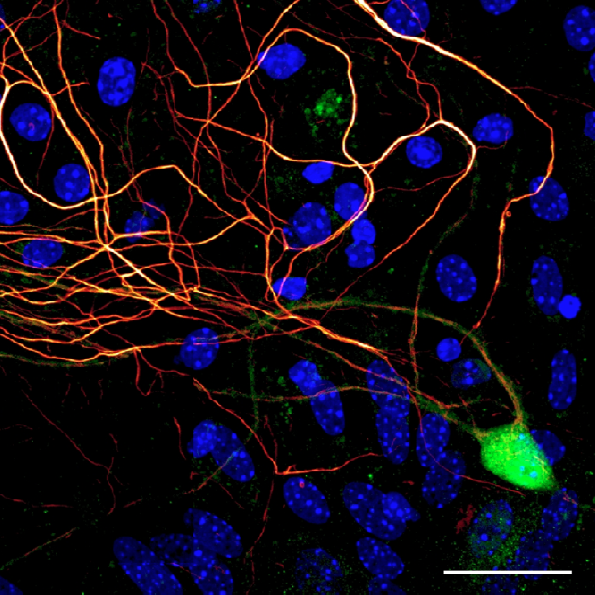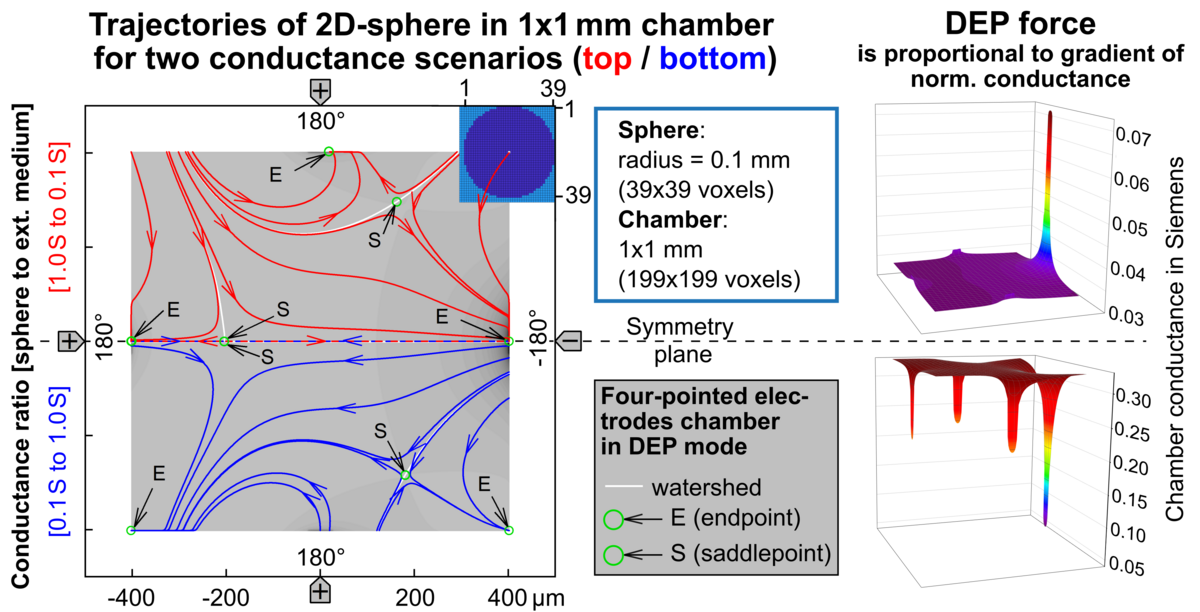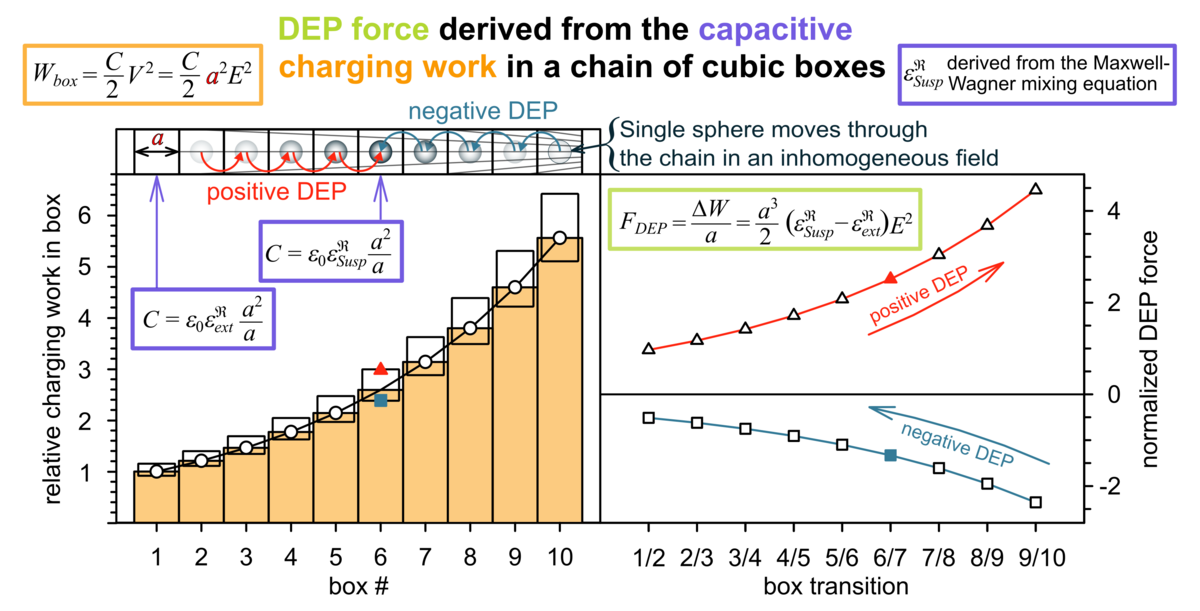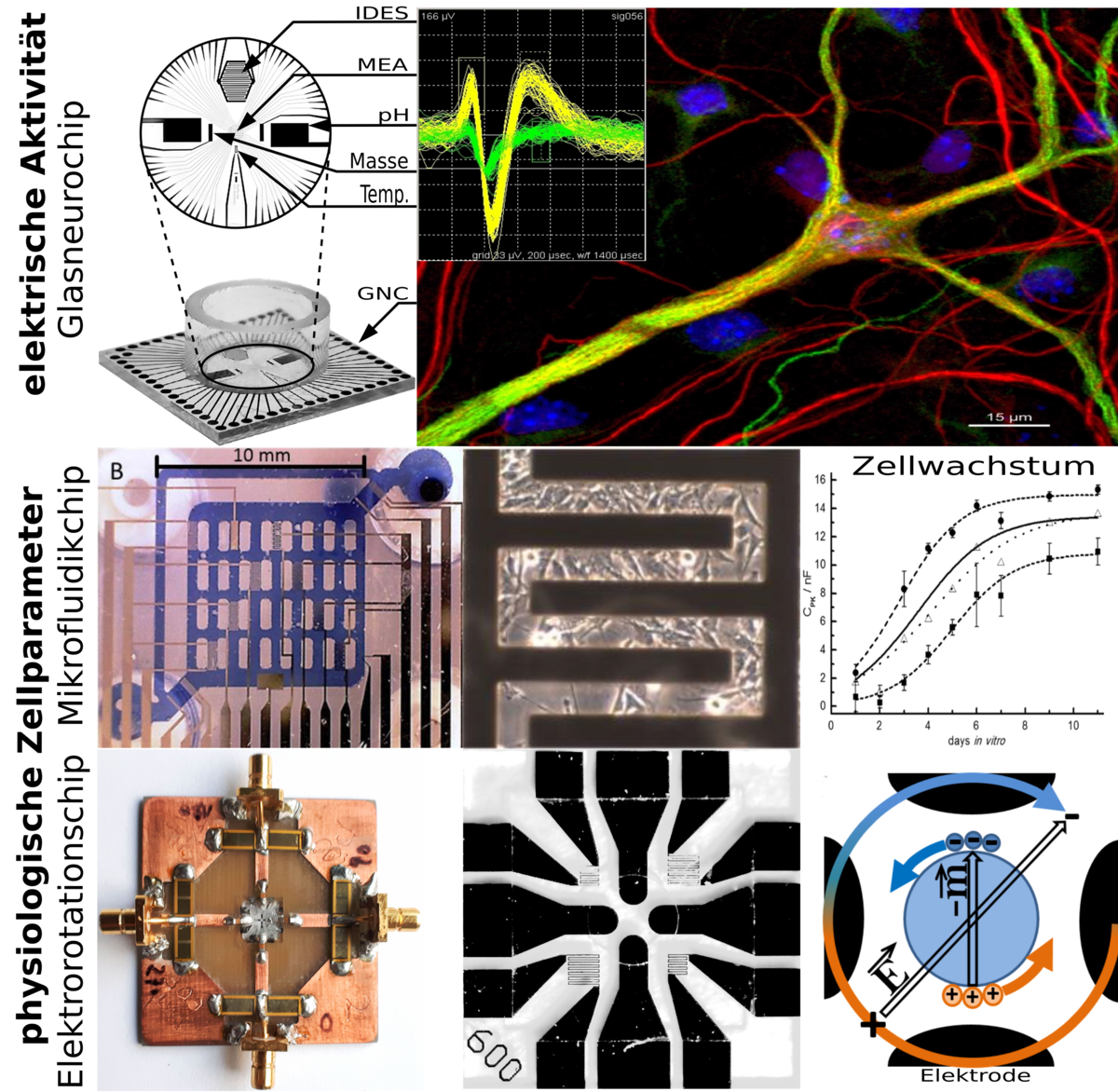Ehemalige Abteilung Biophysik
Die Biophysik ist eine interdisziplinäre Wissenschaft, die die Biologie mit der Physik verknüpft und auf physikalischer Grundlage zu ergründen sucht was hinter den Vorgängen in der Biologie steckt. Hierzu gehört nicht nur das physikalische Verständnis biologischer Vorgänge, sondern auch die Entwicklung und Weiterentwicklung von Untersuchungsmethoden und Geräten. Es werden die verschiedensten Fachbereiche herangezogen. So sind in unserer Abteilung Biologen, Chemiker, Elektrotechniker, Physiker und Ingenieure vertreten. Mathematische Methoden und Computersimulationen werden ebenso genutzt, wie Zellkultur und physikalische Experimente.
Das Forschungsfeld der Abteilung beinhaltet die Untersuchung von elektrischen Eigenschaften der Zellbestandteile, die Untersuchung elektrischer Signale in neuronalen Netzwerken, Toxizitätsuntersuchungen an sich entwicklenden Nerven- und Stammzellen, Untersuchungen an Einzelzellen und Zellverbänden, die Entwicklung von Mikrofluidischen Systemen zur Untersuchung von Zellen sowie für die 3D-Zellkultur und vieles mehr.
Mit dem Fortschreiten der Technik bieten sich immer neue Möglichkeiten und Wege für Experimente und Untersuchungen in Großen wie im Kleinen.
Neuigkeiten
Ibrahim, N., Maganuco, S., Dal Sasso, C. et al. Tail-propelled aquatic locomotion in a theropod dinosaur. Nature (2020). https://doi.org/10.1038/s41586-020-2190-3
"Congratulations on this excellent study, which confirms the idea that the dorsal sail and dorsal fin, which have a similar shape in Spinosaurus aegyptiacus and sailfish, had an analogous function in hydrodynamic stabilization, which also allowed the Spinosaurus to hunt underwater (as hypothesized by Gimsa et al. doi.org/10.1017/S0016756815... ). While the Spinosaurus hunted with its neck and snout, a sailfish uses its bill, and while Spinosaurus was driven by an undulating tail with a fin seam, a sailfish is driven by its tailfin."
Preprint to Project: Underwater swimming and hunting abilities of Spinosaurus aegyptiacus
by Prof. Jan Gimsa
www.researchgate.net/publication/359512533_Open_Letter_May_2020




